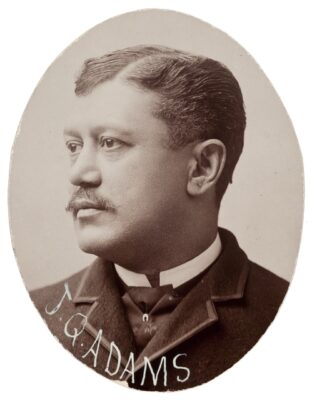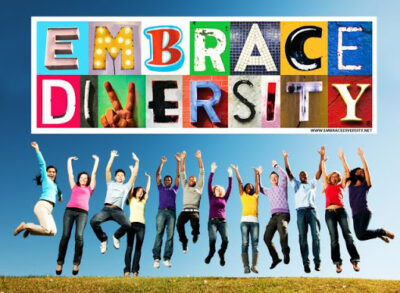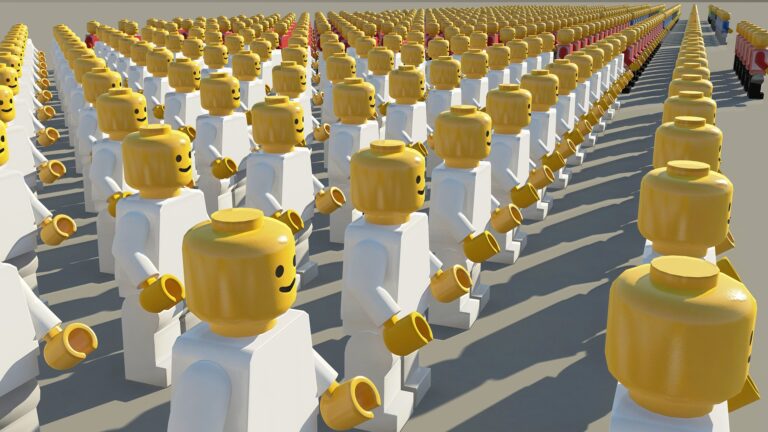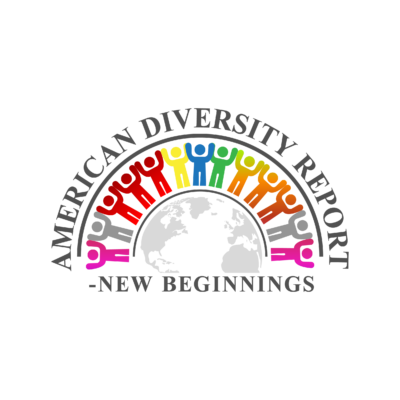Updated September 25, 2022
Advisor: an adviser or advisor is part of the organization leadership and is normally a person with more and deeper knowledge in a specific area and usually also includes people with cross-functional and multidisciplinary expertise. An Advisor accepts responsibility for keeping informed about activities of the organization and for advising officers of the organization on the appropriateness and general merits of policies and activities.
ADR-NB and ADR-New Beginnings: Abbreviations for American Diversity Report-New Beginnings.
American Diversity Report: The American Diversity Report, our Big Sister Organization, is an award-winning, multi-media platform in its 17th year. It’s Founder/Editor-in-Chief Deborah Levine is a Harvard-educated, Forbes Top 10 Diversity & Inclusion Trailblazer. The ADR mission is to boost your efforts to repair the world and inspire fellow DEI change-makers with ADR resources, podcasts and more than 1,300 articles from diverse writers from around the world.

Associative-Learning: or Conditioning in behavioral psychology is a theory that the reaction (“response”) to an object or event (“stimulus”) by a person can be modified by experience. For example, when a child touches a hot stove and burns themselves, they “learn” not to touch the stove again. We expand the concept to include; when two or more people simultaneously learn about a subject, the result will be a better understanding of the stimuli and each other. Students will be able to re-orient the stereotypes they have established. This is the reasoning behind Pathways. When students learn about people who significantly contributed to their community or the world, and who share their heritage or race, they take pride in themselves because they associate themselves with that person. And other students look with more respect upon that student. We call that Pride and Respect by Association.
Biography Catalog: This database is part of our Education Platform. It contains short biographies about people who have significantly contributed to making the world a better place. Leaders in all fields, Religious, Political and Business; Scientists, Inventors, Authors and Educators will have their story told in short articles that teachers can use to introduce them in the classroom. Our belief is that when a student hears about someone of the same heritage that has made such a contribution, the student will feel more pride in themselves. And other students will gain more respect for that student because of the association of their mutual heritage.
Branches: We call each of our local field locations Branches, sometimes referred to Local Branches, because we are all part of the same organization, just like branches on a tree. We work in unison for a common vision.
Collective Experience, The: The overall name for our educational programs, which include Pathways and Gatherings. Pathways are designed to bring Pride to minority students, while showing other students that their classmates have been important contributors to America, through the Biography Catalog; and Stories That Inspire will offer examples of how people have overcome hardships and prejudice and have achieved great things in their lives. Gatherings are the group activities we offer which bring students together in positive, supervised programs where they interact with Students of a Difference to learn about each other. The central goal of guided interaction between students is to establish an understanding and respect for other people through Peer-to-Peer relationships. With experience comes understanding and even friendships.
Many schools are populated by one dominate race, religion, or income strata, and even in mixed schools, students tend to congregate with others they know and who “look and behave” like them, it is a natural feeling of comfort. It is an accepted psychological fact that people like spending time together with people with whom they have things in common, such as race, religion, age, gender, etc. Because of this, students do not spend time with a very diverse group of individuals. By bringing Children of Diversity together we hope to create that same level of comfort between them – a feeling of harmony and understanding. It is the familiarity between students that diminishes the need for their protective instinct. Over time, students learn to appreciate each other, and to unlearn the negative feelings that may have existed. The Guide offers ideas for supervised activities that can be arranged by the school educators, with the assistance of committees made up of parents and the community leaders.
Culture: The New York State Education Department understands culture as the multiple components of one’s identity, including but not limited to race, economic background, gender, language, sexual orientation, nationality, religion, and ability. Culture far transcends practices such as cuisines, art, music, and celebrations to also include ways of thinking, values, and forms of expression.
Cultural Anthropology: the branch of anthropology concerned with the study and analysis of human societies and cultures and their development.
Cultural Diversity: is the quality of diverse or different cultures, as opposed to monoculture. In a general format, it is having respect for each other’s differences. We use the term Heritage to mean all cultures.
Cultural Relativism: The doctrine that knowledge, truth, and morality exist in relation to culture, society, or historical context, and are not absolute. We use critical thinking to reexamine our current “truths and moral standings”. Each society establishes its own morals by which they are judged.
Cultural Sensitivity: The most common definition: Cultural sensitivity is being aware that cultural differences and similarities between people exist without assigning them a value – positive or negative, better, or worse, right, or wrong. In other words, we people accept for who they are, without judgement.
Democracy: “Democracy, pure democracy, has at least its foundation in a generous theory of human rights. It is founded on the natural equality of mankind. It is the cornerstone of the Christian religion. It is the first element of all lawful government upon earth.” Adams was President of the United States and , in his retirement, instrumental in the Amistad Slave Case of 1841, which is considered the first civil rights case in America. He was a proponent of the anti-slavery movement. Picture from: https://www.brainyquote.com/topics/equality-quotes_7

Diversity in Modern Society: In the dictionary Diversity is defined as: “the state of being diverse; variety, a range of different things”. We define Diversity as the practice or quality of including or involving people social and ethnic backgrounds, (i.e., races, religions, genders, sexual orientations, place of national origin, etc.). The concept is simple and the path to true Diversity will take time to navigate, but with the combined efforts of our schools, businesses, communities, and politicians it can be accomplished.

Equality: is about ensuring that every individual has an equal opportunity to make the most of their lives and talents. It is also the belief that no one should have poorer life chances because of the way they were born, where they come from, what they believe, or whether they have a disability.
Passive vs Aggressive
Equity: This term is a modernization of the term Equality, which better defines the goals of today’s society. In 1963 Martin Luther King, Jr. said in his I Have a Dream Speech, “A dream of equality of opportunity, of privilege and property widely distributed; a dream of a land where men will not take necessities from the many to give luxuries to the few.” Today we use the term Equity to mean more than just fairness and justice. Whereas equality means providing the same to all, equity means recognizing that we do not all start from the same place and must acknowledge and make adjustments to these imbalances. And, making adjustments means not just thinking about them, but taking action by giving our time and money to those less fortunate. Building a society where all people are treated equability requires a New Way of thinking about how we can achieve equality.

Gatherings: are fun and interesting group activities that take place outside the classroom, such as field trips, visits to museums, combined sports team practices and science competitions, supervised by Branch members and focused on relationships and education. This part of our Pathways Programs in The Collective Experience Platform.
Heritage: In the dictionary, the definition of “heritage” is “the status, conditions or character acquired by being born into a particular family or social class. We add, “inclusive term to “to include all attributes of Diversity into one word – where the person is derived from: Race, Religion, Ethnicity, Gender, Sexual Orientation, Cultural and Equity Differences.
Hardwired: make (a pattern of behavior or belief) standard or instinctive. Relates to Human Instinctive Behavior, found in Teaching Diversity in America material.
Human Instinct Defined: An innate, typically fixed (hard-wired) pattern of behavior in response to certain stimuli. A natural or intuitive way of acting or thinking, sometimes called intuition, natural feeling, sixth sense or second sight. Instinct protects us from harm but can also prevent us from seeing who a person really is.
Inclusion: the practice or policy of providing equal access to opportunities and resources for people who might otherwise be excluded or marginalized, such as those who have physical or mental disabilities and members of other minority groups.
Learned Behavior: The concept that Intolerance and prejudice are not instinctual but are acquired by experience and teaching. We learn from our parents, religious leaders, schoolteachers, community members, the news media and social web sites.
“NO ONE IS BORN HATING ANOTHER PERSON BECAUSE OF THE COLOR OF HIS SKIN, OR HIS BACKGROUND, OR HIS RELIGION. PEOPLE MUST LEARN TO HATE, AND IF THEY CAN LEARN TO HATE, THEY CAN BE TAUGHT TO LOVE, FOR LOVE COMES MORE NATURALLY TO THE HUMAN HEART THEN ITS OPPOSITE? -NELSON MANDELA, LONG WALK TO FREEDOM

Lessons Learned: During each Committee meeting time should be set aside by the chairperson for everyone to discuss what transpired since the last meeting. Start with the chairperson bringing up successes and mistakes, and why they were positive or negative. What can we learn from these situations that will make the organization better? Do not be negative or criticize, be positive and offer suggestions that will help the group. We will be better in the future when we understand the past.
Local Committees: The force behind each program. Consists of local members and interested people who will manage the programs. They can be found in this guide, and The Manual for Councils for Peace and Prosperity.
Members: People who participate in our programs on a regular basis, both in the National Organization and Local Communities are members. From parents who chaperone students on class trips to The President of the organization.
Mentors: An experienced person who teaches or trains students. In ADR-NB we rely on our Mentors to lead and manage our programs in each Community.
Mix and Match: This is making sure each program has the effect we are working for. Sort of like M&M’s, supervisors and teachers need to mix and match students-of-a-difference or the program will fail, while keeping in mind the tendency of the students to spend time with friends and people they know.

National Committees: These Committees are part of the national organization and adhere to the by-laws and Organization Structure Rules. Local committees are less formal, and they are organized based upon the unique requirements of the community they serve. They are the backbones of the organization, as they provide the leadership and energy for each program. They are staffed with a diverse group of qualified individuals, with the appropriate skill set as they are the “in house experts” to lead the organization and for other members to consult with.
Moral Center/Moral Compass: Morals are principles and beliefs concerning right and wrong behavior. Each of us is the culmination of life’s experiences; this is how we develop the principles by which we live, our social behavior and determine what is ethical and correct. We subconsciously establish this Moral Center as we move along the path of life and focus on the center line to guide us as we meet each daily circumstance. Be true to yourself. We use this in our Stories That Inspire, found on our website.
“I have learned that as long as I hold fast to my beliefs and values – and follow my own moral compass – then the only expectations I need to live up to are my own.” Michelle Obama
Read more at https://www.brainyquote.com

Nonbinary Sexual Orientation: Also referred to as enby, this is a gender identity and umbrella term for gender identities that can’t be exclusively categorized as male or female.
Pathways: this is the name for the in-class programs we offer, such as, Stories That Inspire and Biographies.
Partner: Foundations and Organizations that actively collaborate with New Beginnings, who share a passion and commitment to bring Understanding and Acceptance to all people. They are tireless in their support, lend guidance and actively participate in our activities; without their efforts we would not be successful.
Pedagogy: The method and practice of teaching, especially as an academic subject or theoretical concept.
People of a Difference and People of Diversity: This term means People who are different from the person being written or spoken about; it also means “all people are includes all races, ethnicities, religions, genders, sexual orientation …… everyone. We use Children of a Difference and Children of Diversity, with the same meaning.

Nonbinary Sexual Orientation: Also referred to as enby, this is a gender identity and umbrella term for gender identities that can’t be exclusively categorized as male or female.
Pathways: this is the name for the in-class programs we offer, such as, Stories That Inspire and Biographies.
Partner: Foundations and Organizations that actively collaborate with New Beginnings, who share a passion and commitment to bring Understanding and Acceptance to all people. They are tireless in their support, lend guidance and actively participate in our activities; without their efforts we would not be successful.
Pedagogy: The method and practice of teaching, especially as an academic subject or theoretical concept.
People-of-a Difference and People-of-Diversity: This term means People who are different from the person being written or spoken about; it also means “all people are includes all races, ethnicities, religions, genders, sexual orientation …… everyone. We use Children-of-a-Difference and Children-of-Diversity, with the same meaning.
Platforms: In the dictionary it is defined as: the declared policy of a group, policy, program, plan of action, principles, objectives, tenets or aims. We refer to the three parts of New Beginnings as Platforms: American Diversity Report, Councils for Peace and Prosperity and Teaching Diversity in America.
Prejudice Defined: Preconceived opinion that is not based on reason, fact or actual experience. Dislike, hostility, or unjust behavior deriving from unfounded opinions. This is another word for Intolerance, one we hear all the time.
Pride and Respect: Pride is defined as: a feeling or deep pleasure or satisfaction derived from one’s own achievements, the achievements of those with whom one is strongly associated, or from qualities that are widely admired. We know that when students learn about people who have contributed in significant ways to making the world a better place, and who share the student’s heritage, these students will gain a sense of pride within themselves. Never underestimate The Power of Pride! Other students will see this student in a more positive light and because of the connection to the person in the biography. This is the basis for building respect between students. As teachers relate positive information about leaders from each “heritage” the positive image of all students builds more respect – the building blocks for understanding and acceptance. We ask teachers to offer a biography just two or three times a year. The biographies are located on our website within the Teaching Diversity button. The teacher can read or summarize this biography to the class, and if desired assign two students, of different heritages, to research and present their findings to the class.
Prime Directive, The: Listen Loudly, Speak Softly. Each school is a reflection of the community it serves, and therefore each student population is unique. Some will have a large percentage of one race or religion, others a mixture of each. We need to listen first and speak second. What makes their community and school special and wonderful and what are some of the problems. Then, discuss our programs and what the benefits are. Our Programs are open-ended – meaning they will be updated as we learn from experience, we will learn something important with each opportunity– but first, we must listen.

Religious Freedom: the right to practice any religion you choose, or to live without any religion at all, as guaranteed in our Constitution, without government interference. It is the very first “Right” that is listed because it is that important.
Respect Defined: A feeling of deep admiration for someone, or something elicited by their abilities, qualities, or achievements. The state of being admired or respected. Respect is Acceptance, Acceptance is Understanding, And Understanding leads to Diversity.
Intolerance and Prejudice are defined as the lack of respect for practices or beliefs other than one’s own, a preconceived and unfounded opinion. It causes the rejection of people whom we perceive as different, for example, members of a social or ethnic group other than ours, or people who are different in political or sexual orientation.
Secular: having no religious connection; denoting attitudes, activities or other things that have no religious or spiritual bases. Non-religion.
Self-Esteem: Is confidence in one’s own worth or abilities; self-respect.
Self-Protective: This psychological mechanism is just fear of the unknown, a saying you hear very often, and one we all except as fact. An example of this self-protective instinct is when we walk into unfamiliar city streets at night or are reluctant to taste food, we are unfamiliar with. We get nervous when driving in a snowstorm because we can’t see what’s ahead, that fear of the unknown is what keeps us safe.
We are more comfortable spending time with people we have things in common with, like sports, politics, and hobbies – but also people that share the same religion, race, and gender. The bottom line: we spend time getting to know and develop relationships with people like ourselves, and stay away from people that are different than us. This self-protective mechanism that serves to protect us is the same mechanism that keeps us separate and results in racism.
We like to spend time with People Like Ourselves

Shallow Organization: This is our term for a company or organization designed to have as few levels of management as possible. The benefits to having only two levels are, better communication, more autonomy for our local committees, a nimbler organization that can react to changes in the education system and higher job satisfaction. Our philosophy is, as much of the decision making needs to be done by the local members because they know what’s best for their communities.
Sponsors: Individuals or organizations that show their support by funding a specific activity or event. Some sponsors choose to participate in the event as well, while others prefer to lend financial support only and have their name listed as a sponsor. There are many opportunities in each platform from which to choose a sponsorship, such as organization publications, web site maintenance, luncheons, or other gatherings that further our mission, sponsoring an exchange student, fund raising, supporting the Biography Catalog Software and Maintenance.
Stories That Inspire: In “Stories That Inspire” we find accounts of remarkable people who contributed to their town or community in significant ways, but never had a chance to tell their tale, or haven’t received the recognition they deserve. Perhaps some significant parts of the story were never told, or new details that are relevant to today are now available. Sometimes it’s a friend or relative that will bring the story to our attention because the person is no longer alive or incapable of telling their own story. These stories are meant to bring a sense of pride to students who share the same heritage, race, or religion as the storyteller, while bringing respect from other students. We call this pride and respect by association. This part of our Pathways Programs in The Collective Experience platform.
Stereotype: In social psychology, a stereotype is a generalized belief about a particular category of people. It is an expectation that people might have about every person of a particular group. The type of expectation can vary; it can be, for example, an expectation about the group’s personality, preferences, appearance or ability. Stereotypes are sometimes overgeneralized, inaccurate, and resistant to new information. From Wikipedia.
We believe through our programs, Gatherings and Pathways, we can change the negative attitude towards others which have become so pervasive in our society.
Students of a Difference and Students of Diversity: the same as People of a Difference and People of Diversity.
Supporter: People who actively devote their time helping us achieve our goals by participating in our programs or speaking on our behalf at various events. They usually will not hold a specific position but can be counted on for assistance when called upon
Structural Racism: also referred to as Systemic Racism; is the operation of racial bias across institutions and society. It describes the cumulative and compounding effects of an array of factors that systematically privilege one group over another.
From The Aspen Institute (https://www.aspeninstitute.org/about/):
Structural Racism: A system in which public policies, institutional practices, cultural representations, and other norms work in various, often reinforcing ways to perpetuate racial group inequity. It identifies dimensions of our history and culture that have allowed privileges associated with “whiteness” and disadvantages associated with “color” to endure and adapt over time. Structural racism is not something that a few people or institutions choose to practice. Instead it has been a feature of the social, economic and political systems in which we all exist. Correct or not, this is the perception shared by many people in America.
Teammates and Teams: All children and students that participate are teammates. A team could be two or more members assigned to work with each other.
Understanding and Acceptance: Our goal, our dream. When people understand that diversity is America’s greatest strength, and it makes all our lives better and our future brighter, intolerance and prejudice will no longer exist.
Universal Acceptance: Not as it applies to Domain Names in the Internet; but with the goal of all people accepting all others; regardless of race, religion, sexual orientation, culture and all other differences of people.
Website Addresses: adr-nb.org; americandiversityreport-new beginnings.org; americandiversityreportnew beginnings.org; adr-newbeginnings.org
